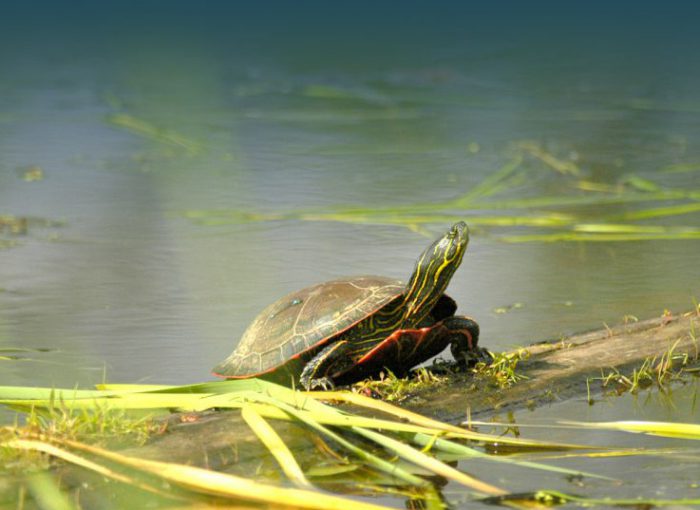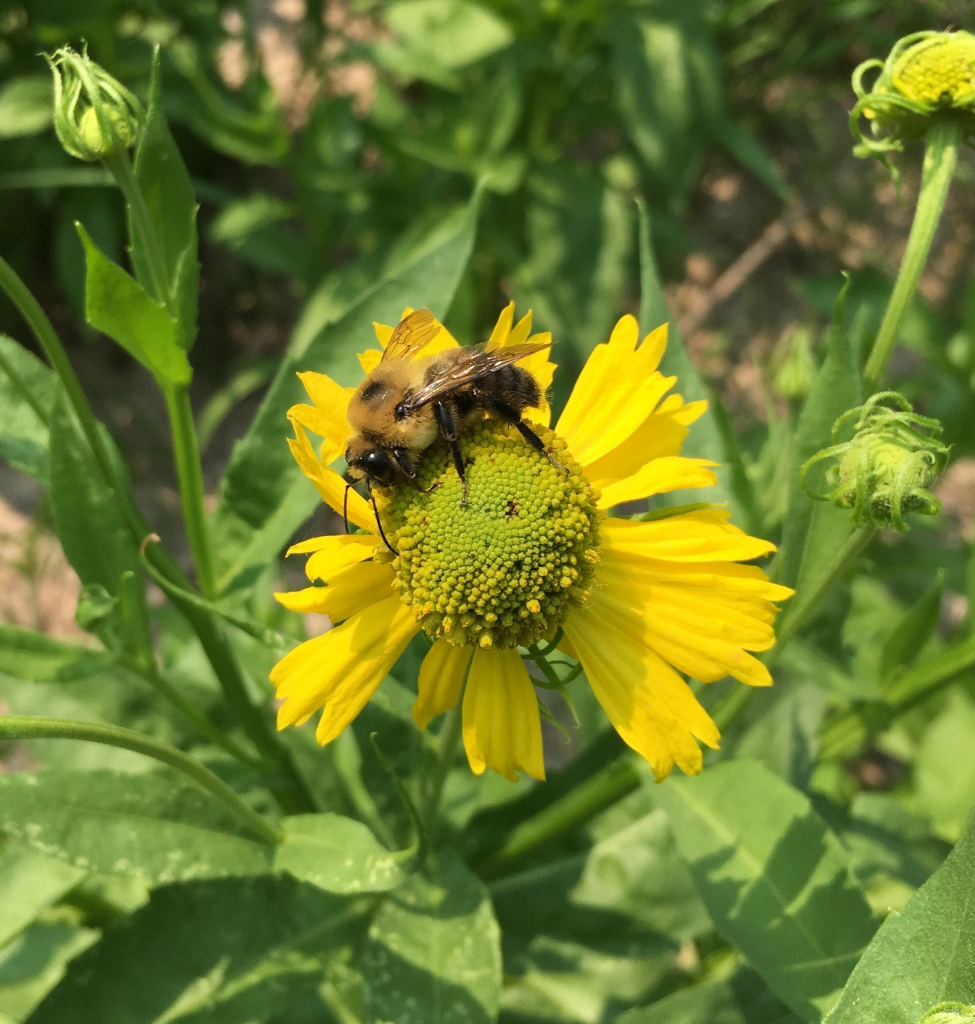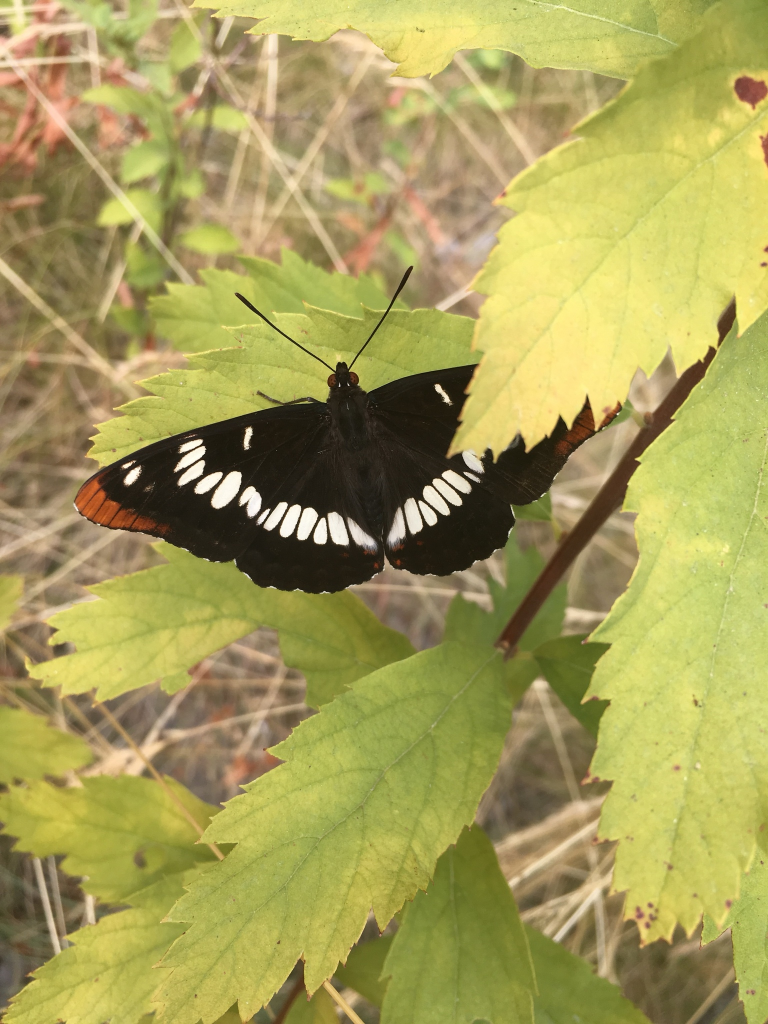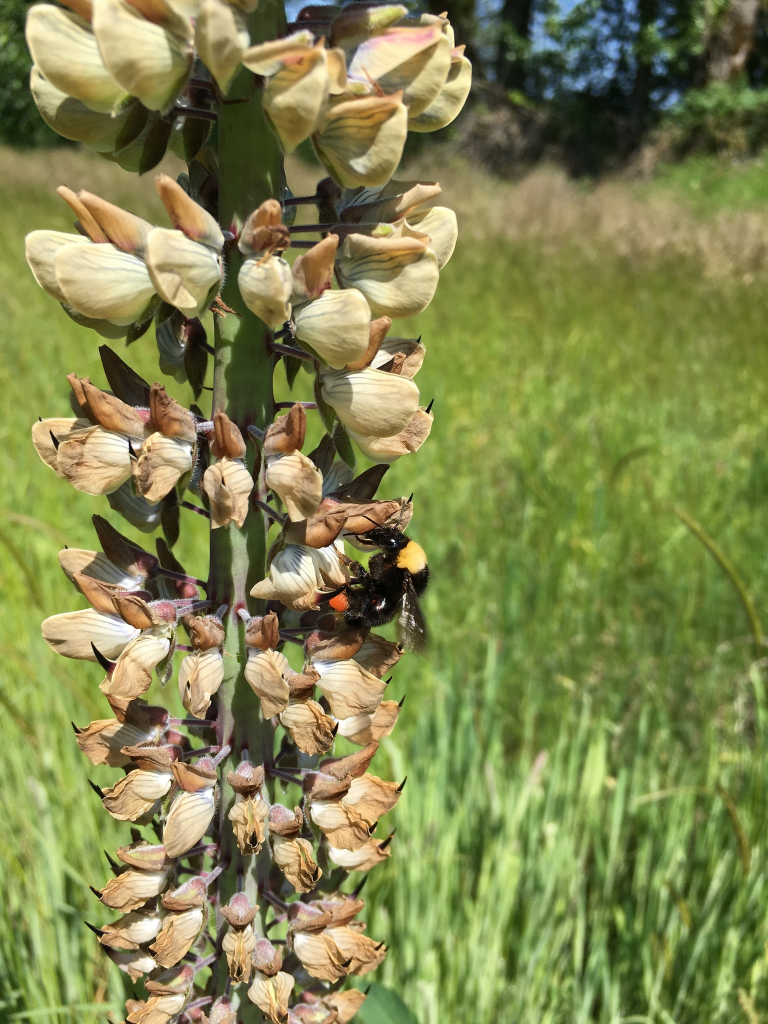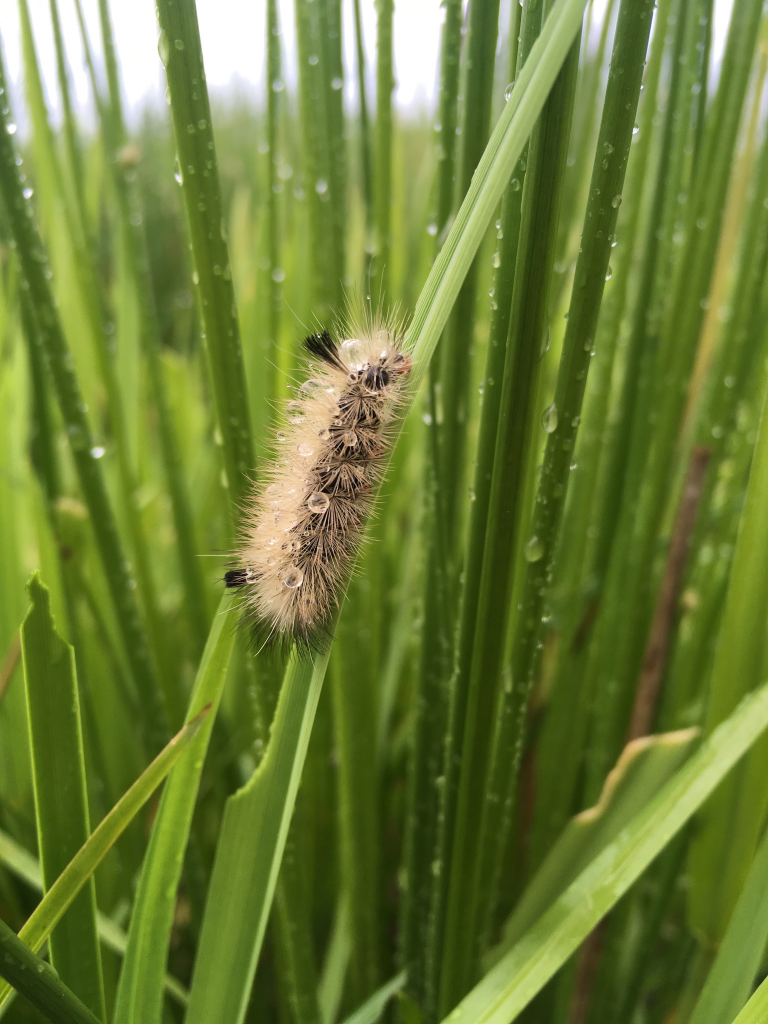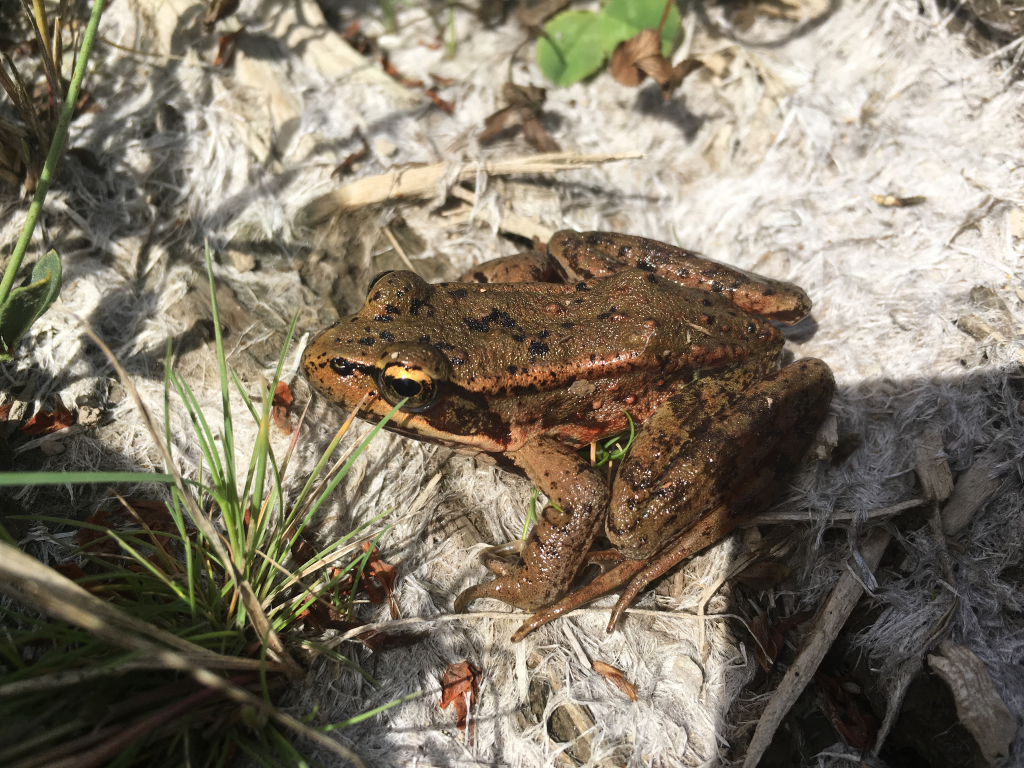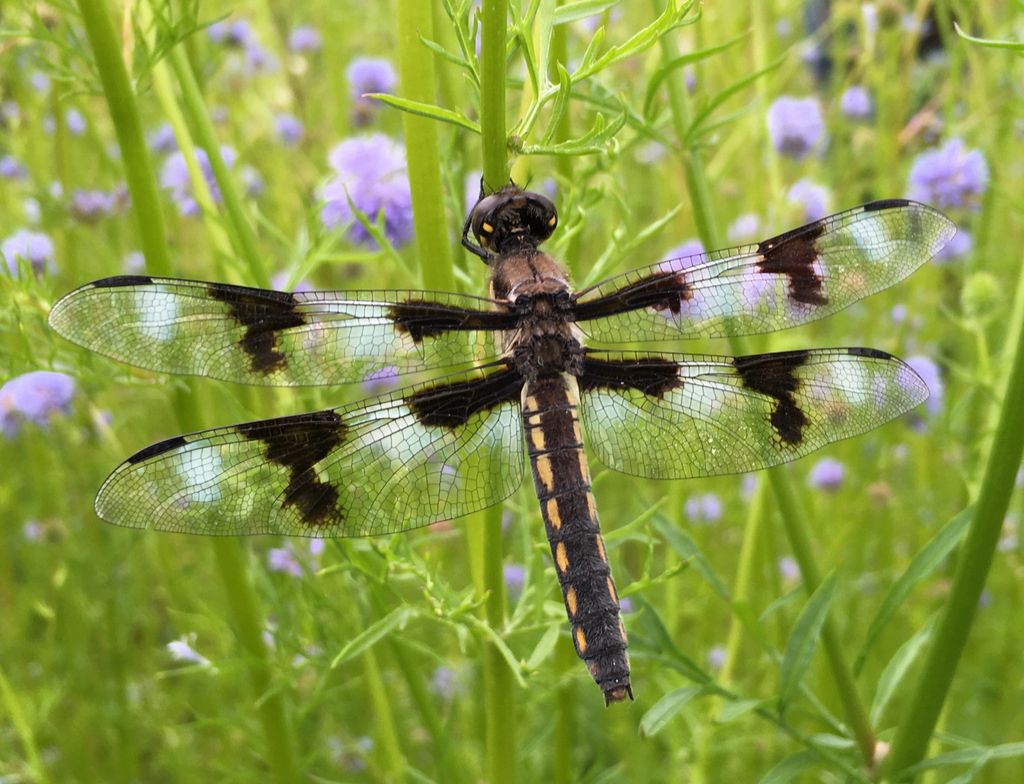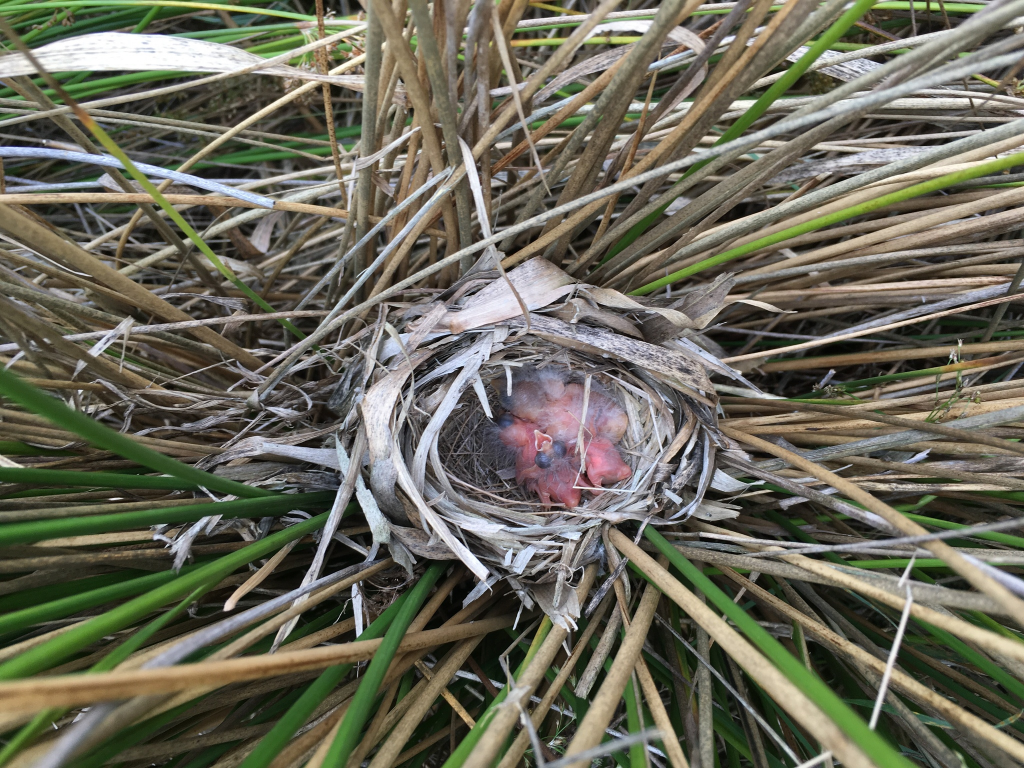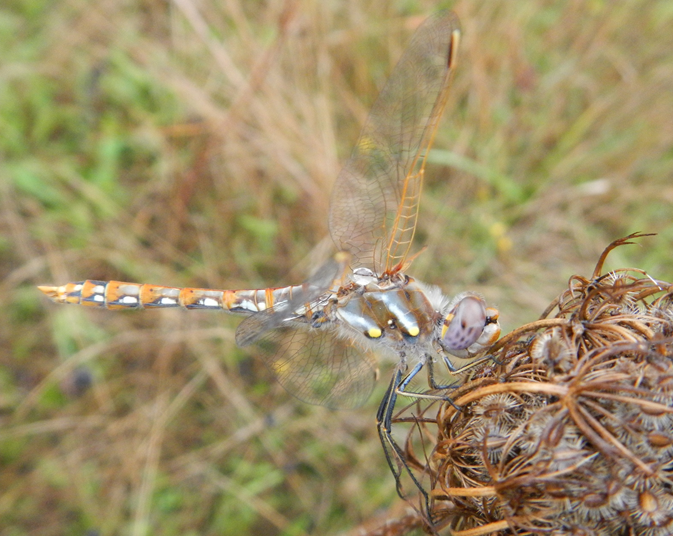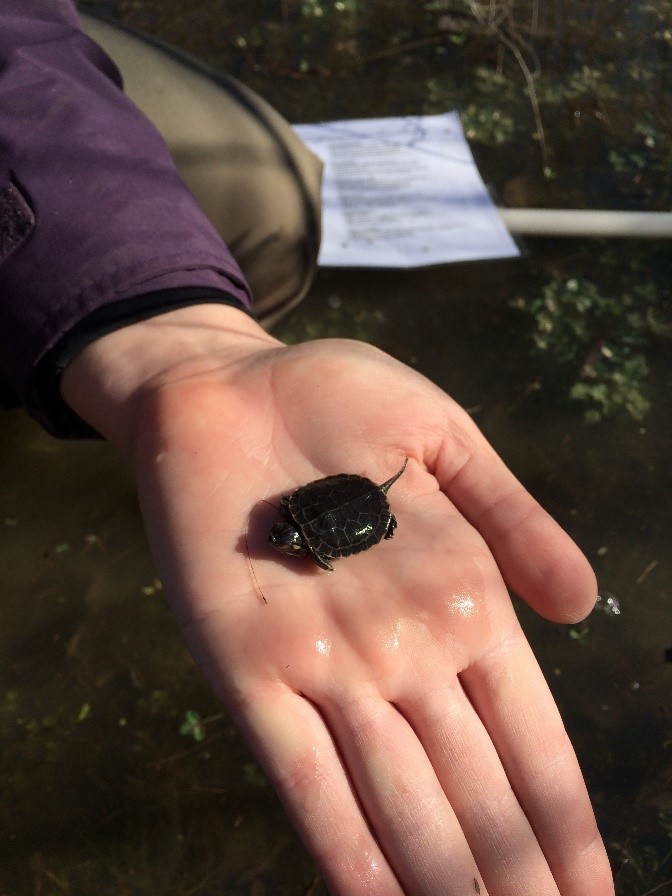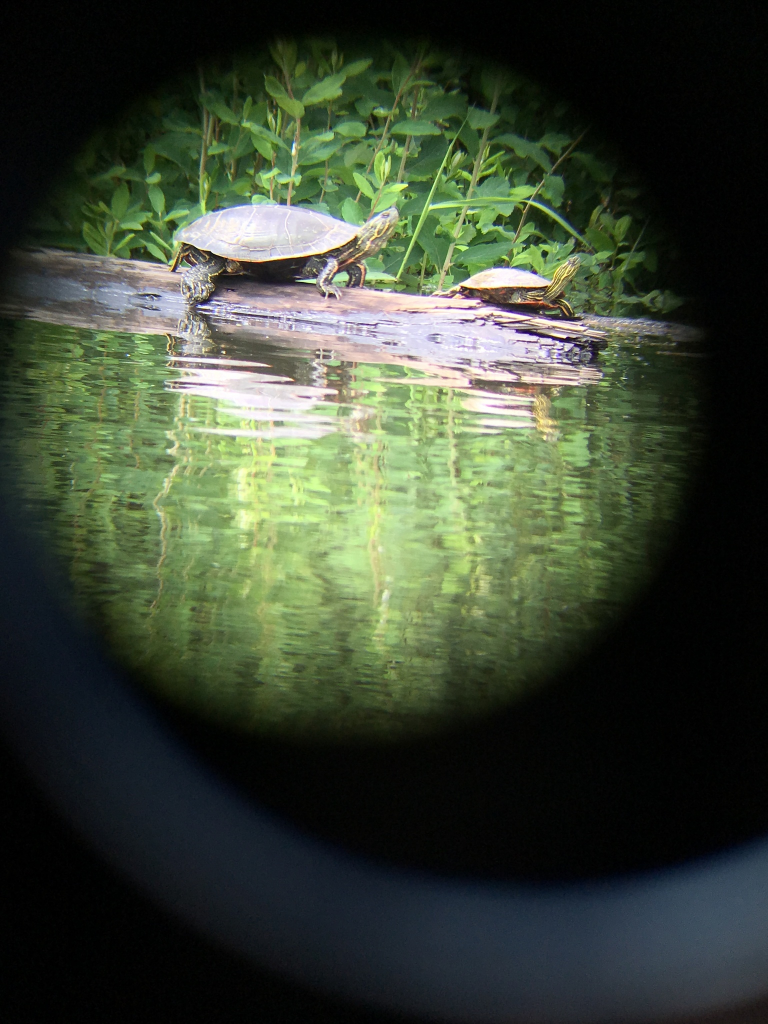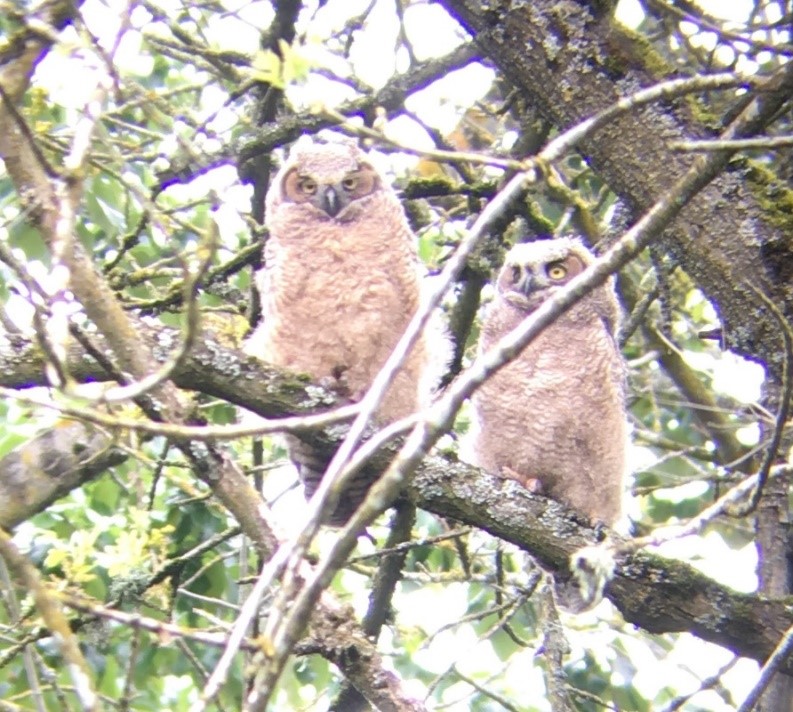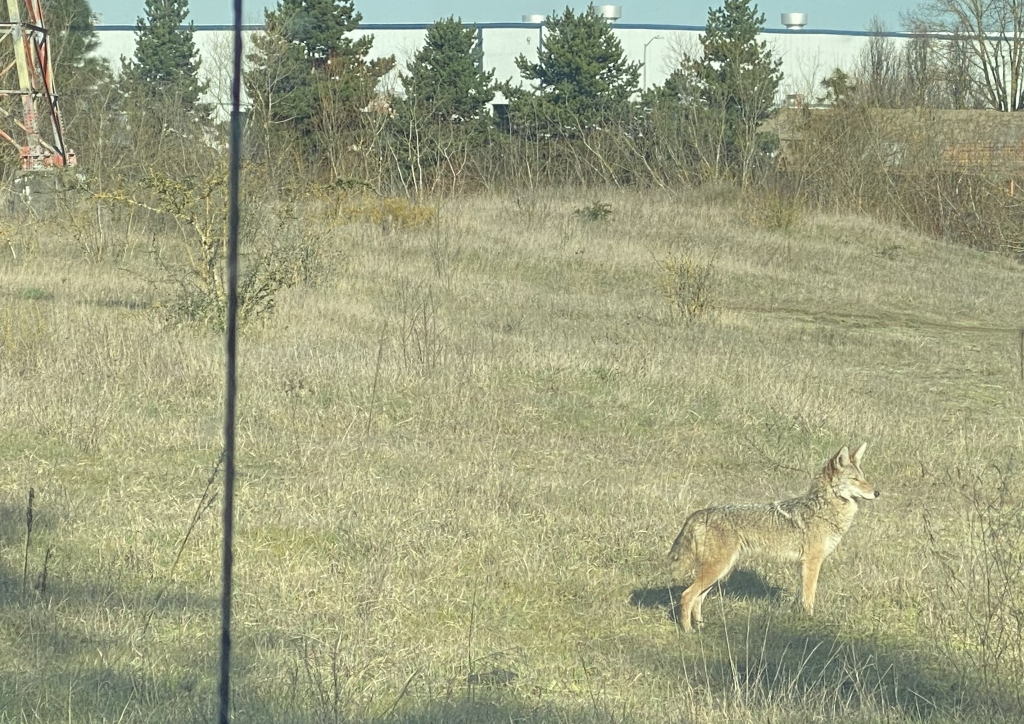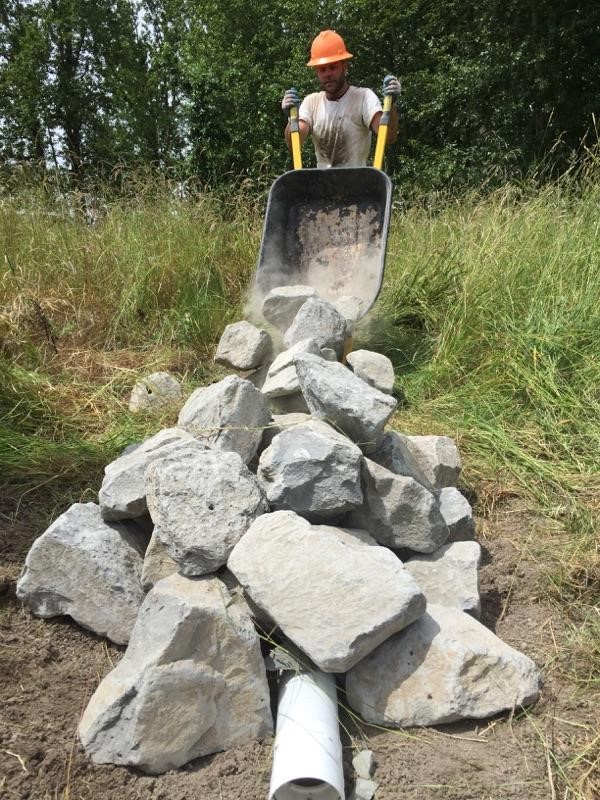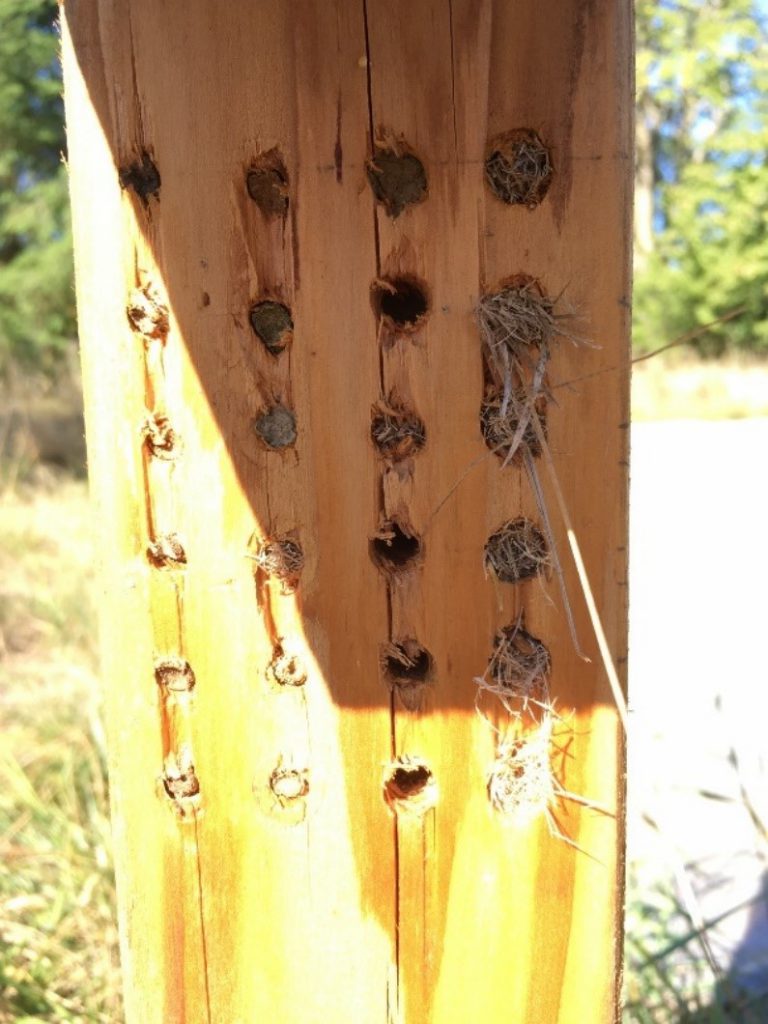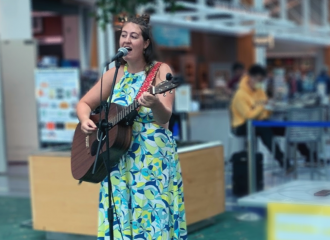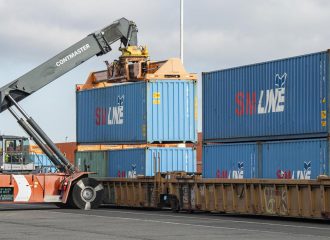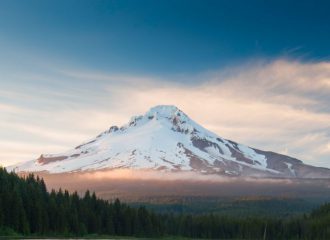Turtles. Bees. And Frogs. Oh My!
These are just a few examples of the diverse wildlife you can find roaming around the Port of Portland’s wetlands and natural areas.
The Port’s Natural Resources department looks for opportunities to support and enhance natural resources in everything we do. We manage more than 900 acres of wetlands and natural areas in the Portland metro region.
On World Wildlife Day, we’re taking you behind the scenes to explore some of the wildlife we find and support at the Port’s wetlands and natural areas.
Brown-belted Bumble Bee (Bombus griseocollis) at Ramsey Lakes mitigation site (Left) and a Lorquin’s Admiral (Limenitis lorquini) at the Leadbetter mitigation site.
The United States grows more than 100 crops that either need or benefit from pollinators, and the economic value of these native pollinators is estimated at $3 billion per year in the U.S.
California Bumble Bee (Bombus californicus) at the Government Island Grassland site (left) and a White-tipped Ctenucha (Ctenucha rubroscapus) caterpillar at West Sundial Wetlands.
In fall 2015, we planted 50 acres of grassland on Government Island with 630 pounds of wildflower seed and 2,000 Camas bulbs. The Xerces Society conducted pre- and post-project insect monitoring to quantify the benefits of grassland enhancement to pollinators.
A Northern Red-legged Frog (Rana aurora) at West Sundial Wetlands (left) and an Eight-spotted Skimmer (Libellula forensis) at the Government Island Grassland site (right).
Port staff monitors our mitigation sites for amphibian egg masses. This information helps inform future maintenance needs and helps staff understand the health of populations over time.
A bird nest at West Sundial Wetlands (left) and a Variegated Meadowhawk (Sympetrum corruptum) at the Randall Mitigation site (right).
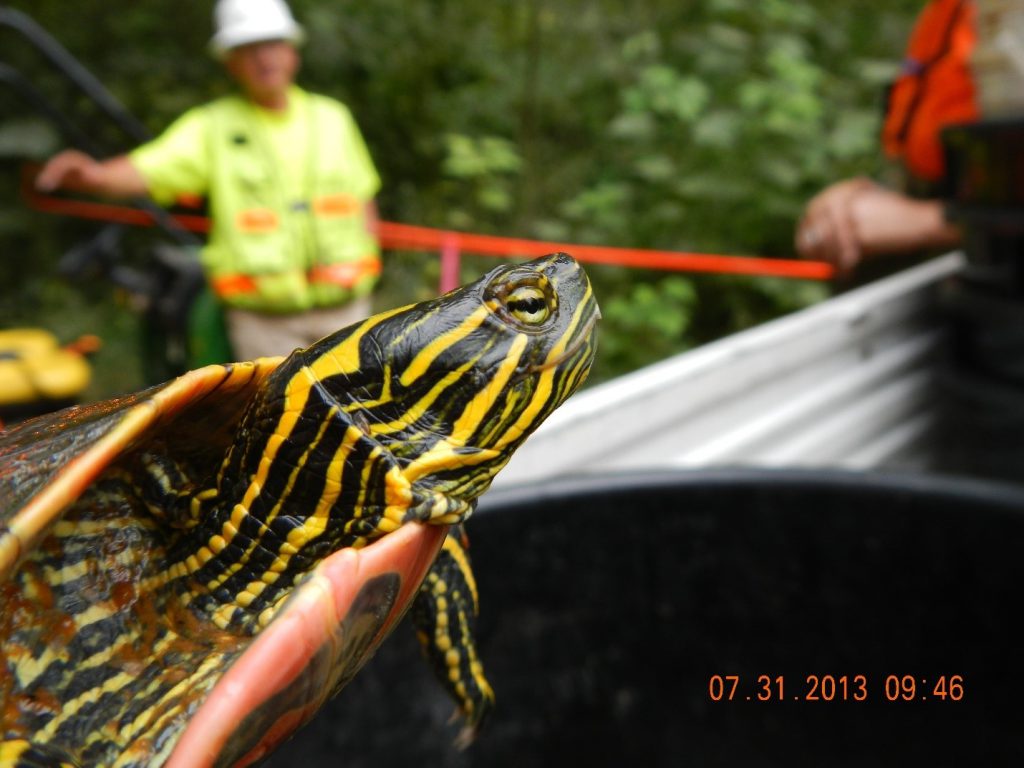
A hatchling Western Painted Turtle (Chrysemys picta bellii) at the Ramsey Enhancement site (top left). Two Western Painted Turtles basking at the Ramsey Lakes mitigation site (top right). A Western painted turtle moved away from a construction area near the Port’s Troutdale Reynolds Industrial Park.
Port mitigation staff periodically monitor sites for turtle species, numbers, and disturbed nests. Disturbed nests are mapped to provide information about nesting site preference and predator damage. This monitoring helps determine whether control measures are necessary for non-native species and if sites may be enhanced to provide better overall habitat for native turtles, which are negatively impacted by many human activities.
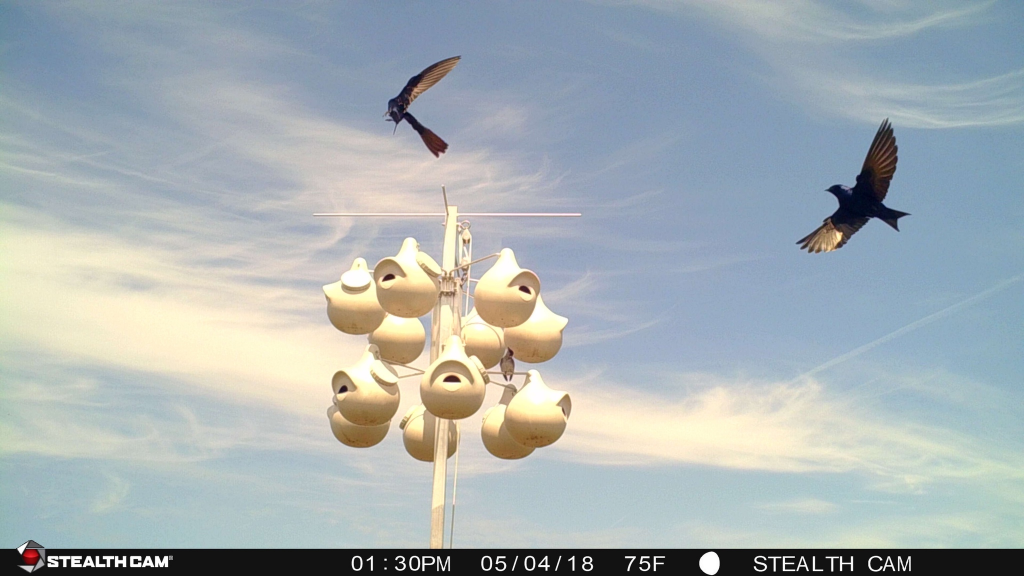
Purple Martins (Progne subis) caught on our wildlife camera at one of our nesting gourd systems.
Great horned owlets (Bubo virginianus) near their nest at Vanport Wetlands (left). Coyote (Canis latrans) at the Terminal 5 Mitigation site (right).
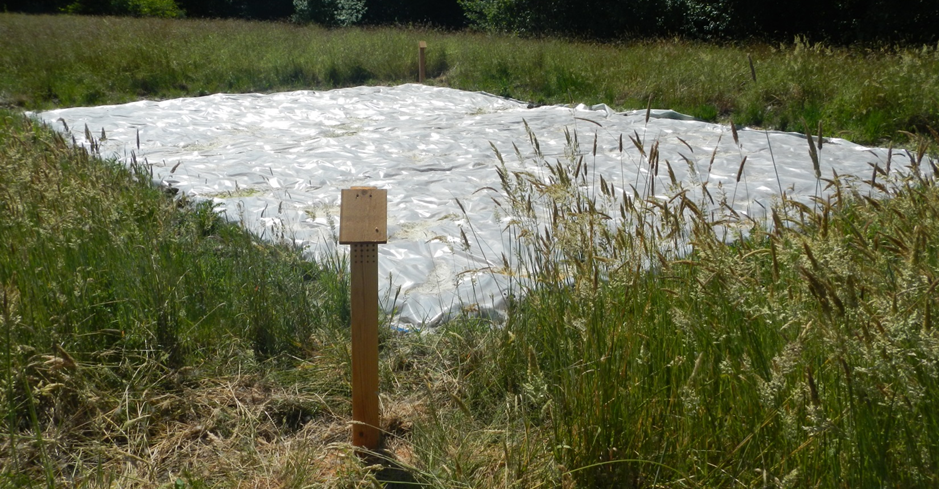
Creating a hibernaculum at Vanport Wetlands (top left) a bee nesting block at the Randall Mitigation site (top right) a pollinator patch in the process of solarization at Vanport Wetlands (bottom).
Rock piles (hibernaculum) provide excellent habitat for reptiles and amphibians (herps). Herps use them as basking sites, cover from predators, shelter from weather and places to lay eggs. Rock piles are appealing to herps because they tend to hold heat during the night and stay cool during the day. They also create a moist environment which many amphibians prefer.
The Port has created pollinator habitat and native bee nesting blocks to support native pollinators at many of our wetland mitigation and enhancement sites. Pollinators are essential to our environment. The ecological service they provide is necessary for the reproduction of over 85% of the world’s flowering plants, including more than two-thirds of the world’s crop species.

